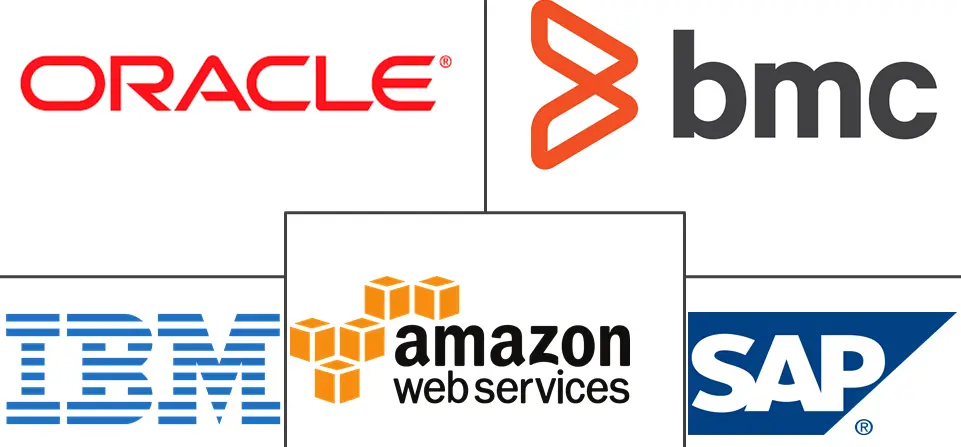Database Automation Market Size and Share
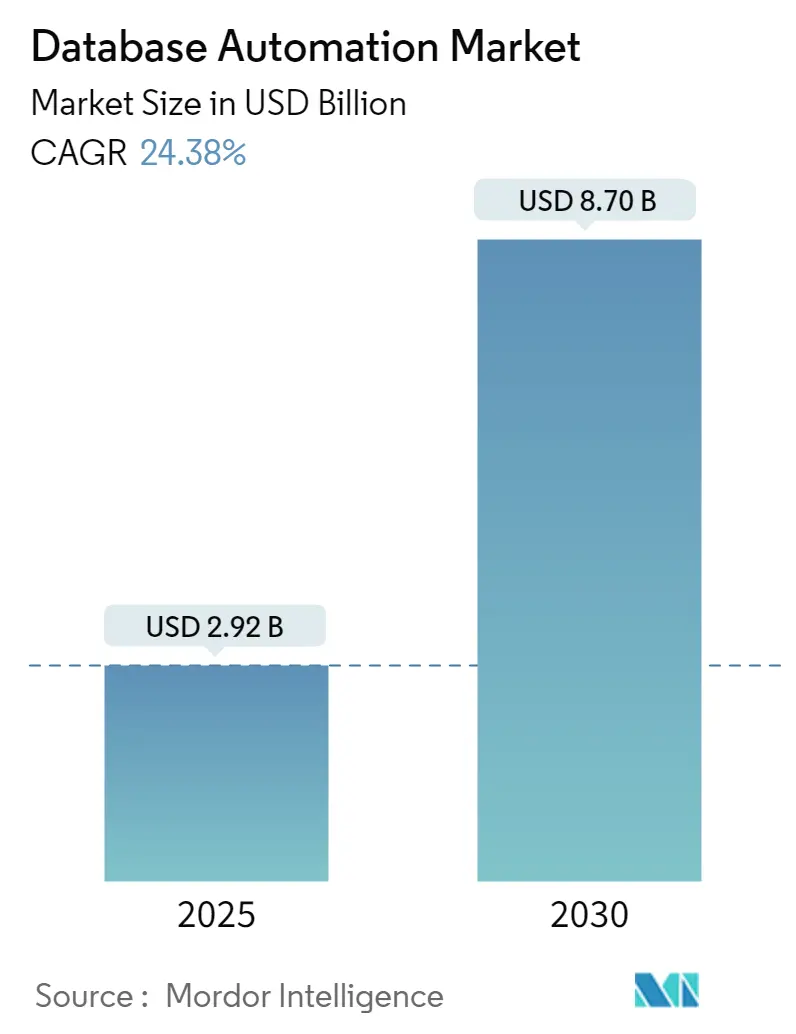
Database Automation Market Analysis by Mordor Intelligence
The Database Automation Market size is estimated at USD 2.92 billion in 2025, and is expected to reach USD 8.70 billion by 2030, at a CAGR of 24.38% during the forecast period (2025-2030).
The increasing volume of data across industries, the need to automate redundant database management processes, automated testing solutions, and the growing need for faster speed to market is expected to grow the demand for database automation across industries. However, the need for human intervention when it comes to data modeling and schema generation might hinder growth.
- While some technology professionals are still consumed with routine operations such as backing up, scaling, tuning, monitoring, and securing critical information systems, autonomous databases make these activities less complicated and time-consuming.
- Modern data pipelines are more complex than traditional ones. New data sources like IoT, formats such as unstructured data, and platforms and languages such as Apache Kafka and Python are creating more complex pipelines. Database automation leverages AI and machine learning to provide full, end-to-end automation for provisioning, security, updates, availability, performance, change management, and error prevention and includes query optimization, automatic memory management, and storage management to provide a completely self-tuning database.
- Vendors in the market are pricing their products on flexible pay-as-you-go pricing models, which reduces the costs of maintaining on-premises data warehouses. For instance, Kerry EAS, a Logistics, shipping, and logistics company in China, uses Oracle's autonomous database. The company reduced the time taken to analyze its 100 million-plus data records from 30 minutes to 10 seconds and significantly reduced IT management costs, and increased return on investment by leveraging the pay-as-you-go model.
- The spread of COVID-19 led to lockdowns in various parts of the globe, putting the IT teams under tremendous pressure due to increased digital loads on mission-critical applications and databases, spiking the demand for database automation. To acquire more customers during this increased demand, the vendors offered free tools and other offerings at a lower cost. The market is expected to grow rapidly in the long term as data grows across industries.
Global Database Automation Market Trends and Insights
IT and Telecommunication industry is Expected to Witness Significant Growth
- Telecom is among the sectors with the highest rate of data generation, and companies are offering cloud services mainly oriented to large-scale data integration. As the need for cloud is expanding among telecom clients, the partnership between database automation and telecom companies is becoming a common trend. For instance, Sielte S.P.A., an Italian Telecommunications company located in Italy, opted for Severalnines Cluster Control, a database solution that can operate 24x7 and offered automatic failover and recovery to minimize downtime and ensure a stable service even in the event of a data center going down.
- The increasing demand for applications leveraging machine learning (ML) and deep learning (DL) on a gigantic scale is anticipated to increasingly push database automation vendors to establish a more comprehensive array of artificial intelligence (AI). According to the State of Database Deployments in Application Delivery survey conducted by Liquibase, 57% of all application changes require a corresponding database change. Machine learning and deep learning on large, sparse data sets require a data management system that can store terabytes of data and perform fast parallel computations-tasks for which data automation solutions are ideally suited; hence is growing more rapidly in the IT and telecommunications industry.
- Moreover, increasing emphasis on implementing DevOps to automate the development, deployment, documentation, testing, and monitoring processes between software developers and operations engineers for integrating the development and operations processes to synchronize efficiently, validate, manage, and apply database changes is also proliferating the growth of database automation in the industry.
- Furthermore, the increasing adoption of public and private clouds to efficiently manage humongous data also increases the need for better and cost-effective database automation solutions. For instance, Oracle Autonomous Database combines the cloud's flexibility with machine learning's power. The company claims the solution can reduce administration costs by up to 80% with full operations automation and tuning and runtime costs by up to 90% by billing only for resources needed at any given time.
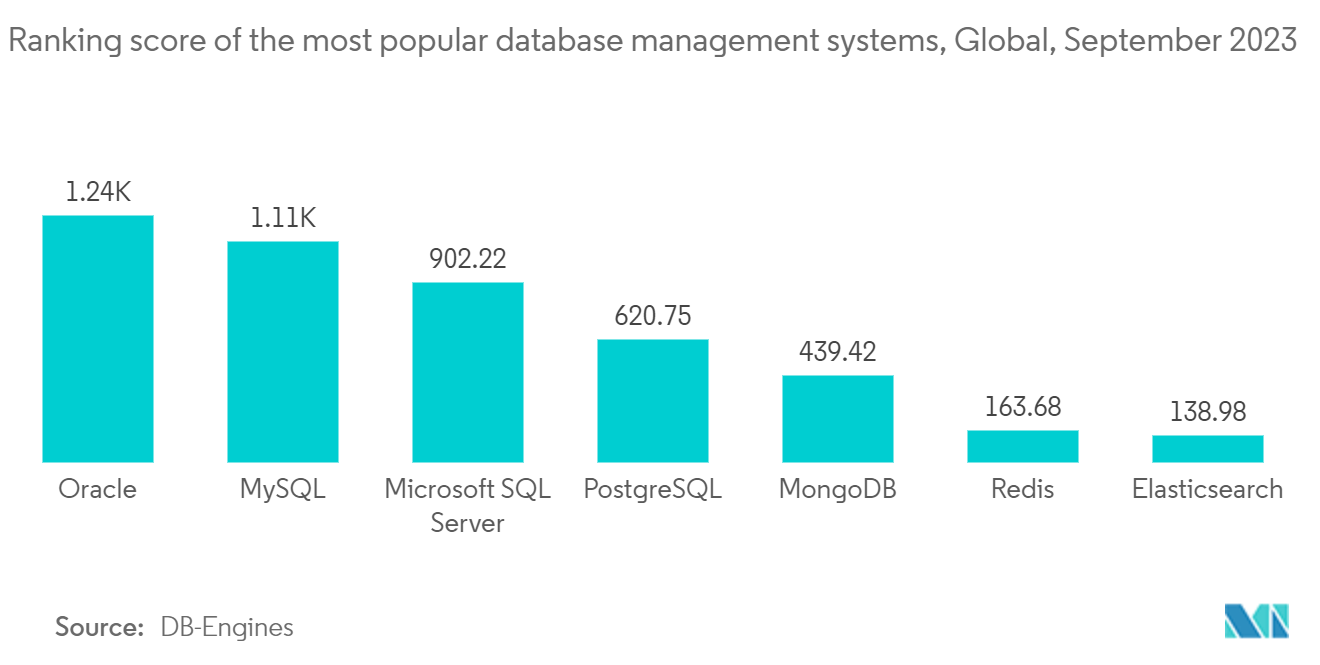
North America is Expected to Hold Major Share
- The increasing deployment of Big Data solutions by major IT enterprises to enhance efficiency and streamline their business operations is driving the expansion of data centers in corporate offices. Hence, these enterprises, mainly small and medium enterprises, are adopting containerized and micro data centers over conventional data center infrastructures. These trends are expected to augment further the growth of the database automation market in the region, owing to the dominance of the area in technology adoption.
- The region has maintained continued growth in data center infrastructure solutions through modular data center investments in tier-2 cities. These investments will enable data center infrastructure management solutions providers to rise. The United States has made several efforts to modernize its infrastructure. For instance, the US Army plans to invest approximately USD 249 million to deploy private cloud computing services and data centers.
- Moreover, the Government of Canada has a 'cloud-first' strategy, whereby cloud services are identified and evaluated as the principal delivery option when initiating information technology investments, initiatives, strategies, and projects. The cloud is also expected to allow the Government of Canada to harness the innovation of private-sector providers to make its information technology more agile.
- Moreover, Consumer Privacy Act (CCPA) takes effect at the start of 2020 in California, adding to the need for database compliance. The combination of all these factors indicates that companies will need adaptable, secure, efficient database systems, and simple database management tools and processes.
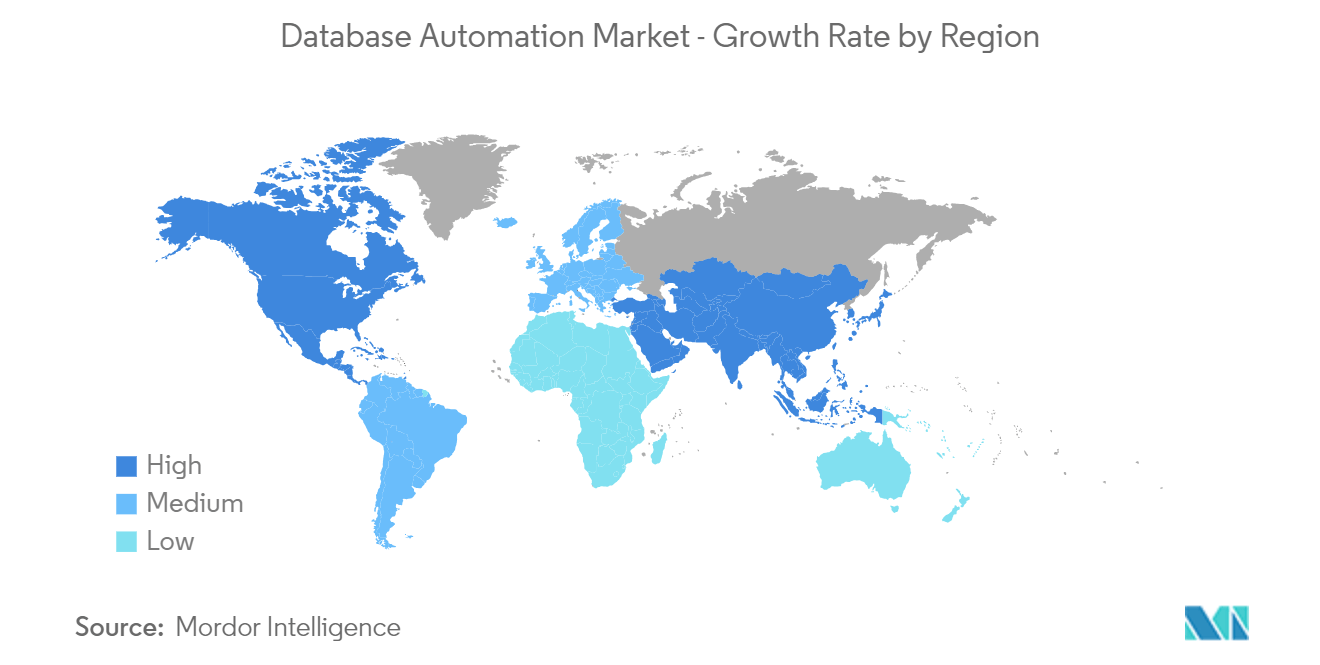
Competitive Landscape
The database automation market is semi-consolidated owing to the presence of big players in the market and intense competition. The players in the market are adopting strategies such as partnerships and acquisitions to offer the best solutions to the customers and gain a competitive advantage. Factors such as high investment, the presence of established players, and continuously evolving technology act as barriers for new entrants in the market.
- November 2023: Redgate, the comprehensive database DevOps provider, launched Redgate Test Data Manager, which simplifies the challenges that come with Test Data Management (TDM) and modern software development across various databases.
- October 2023 - Kim, the no-code, SaaS, patent-protected document generation, assembly, and workflow automation platform, launched its Application Generator to allow individuals in organizations to generate complete web applications from their existing documents without IT development or coding skills and no false positive errors.
Database Automation Industry Leaders
-
Oracle Corporation
-
BMC Software, Inc.
-
Amazon Web Services, Inc.
-
SAP SE
-
IBM Corp
- *Disclaimer: Major Players sorted in no particular order
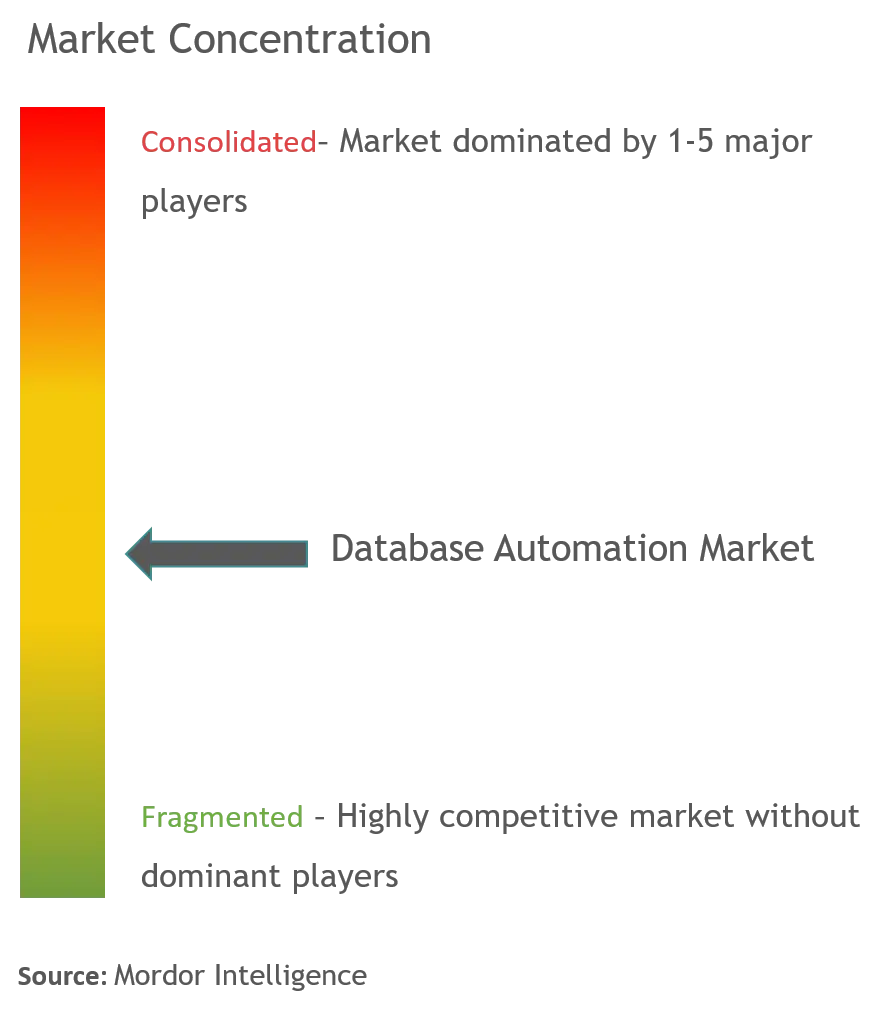
Recent Industry Developments
- June 2023: Aquatic Informatics launched a new automated data validation tool, HydroCorrect, that can accelerate proactive monitoring and management of flooding, groundwater, and water quality in the Aquarius platform. With machine-learning technology, HydroCorrect will transform the QA/QC process with automation and standardized workflows that save time and improve data quality.
- May 2023: data.world, the data catalog platform, acquired the Mighty Canary technology and its incorporation into a new DataOps application. The application uses automation to surface contextual insights and real-time data quality updates directly to the BI, communications, and collaboration tools data consumers use.
Global Database Automation Market Report Scope
Databases are used for storing critical business information and are essential for the efficient operation of modern organizations. Database automation makes the tasks performed by an administrator simpler, safer, and more accurate. Database automation results in fewer deployment errors, higher reliability, and faster change implementations.
The Database Automation Market is segmented by Component (Solution, Services), Application (Provisioning, Backup, Security, and Compliance), Deployment Mode (Cloud, On-Premises), Enterprise Size (Large Enterprises, Small and Medium-Sized Enterprises), End-user Industry (Banking, Financial Services and Insurance (BFSI), IT and Telecom, E-commerce, and Retail) and Geography (North America, Europe, Asia-Pacific, Latin America, Middle East and Africa). The market sizes and forecasts are provided in terms of value in (USD) for all the above segments.
| Solution | Database Patch and Release Automation |
| Application Release Automation | |
| Database Test Automation | |
| Services |
| Cloud |
| On-Premises |
| Large Enterprises |
| Small and Medium-Sized Enterprises |
| Banking, Financial Services and Insurance (BFSI) |
| IT and Telecom |
| E-commerce and Retail |
| Manufacturing |
| Government and Defense |
| Others (Manufacturing, Media and Entertainment) |
| North America |
| Europe |
| Asia-Pacific |
| Latin America |
| Middle East and Africa |
| Component | Solution | Database Patch and Release Automation |
| Application Release Automation | ||
| Database Test Automation | ||
| Services | ||
| Deployment Mode | Cloud | |
| On-Premises | ||
| Enterprise Size | Large Enterprises | |
| Small and Medium-Sized Enterprises | ||
| End-user Industry | Banking, Financial Services and Insurance (BFSI) | |
| IT and Telecom | ||
| E-commerce and Retail | ||
| Manufacturing | ||
| Government and Defense | ||
| Others (Manufacturing, Media and Entertainment) | ||
| Geography | North America | |
| Europe | ||
| Asia-Pacific | ||
| Latin America | ||
| Middle East and Africa |
Key Questions Answered in the Report
How big is the Database Automation Market?
The Database Automation Market size is expected to reach USD 2.92 billion in 2025 and grow at a CAGR of 24.38% to reach USD 8.70 billion by 2030.
What is the current Database Automation Market size?
In 2025, the Database Automation Market size is expected to reach USD 2.92 billion.
Who are the key players in Database Automation Market?
Oracle Corporation, BMC Software, Inc., Amazon Web Services, Inc., SAP SE and IBM Corp are the major companies operating in the Database Automation Market.
Which is the fastest growing region in Database Automation Market?
Asia Pacific is estimated to grow at the highest CAGR over the forecast period (2025-2030).
Which region has the biggest share in Database Automation Market?
In 2025, the North America accounts for the largest market share in Database Automation Market.
What years does this Database Automation Market cover, and what was the market size in 2024?
In 2024, the Database Automation Market size was estimated at USD 2.21 billion. The report covers the Database Automation Market historical market size for years: 2019, 2020, 2021, 2022, 2023 and 2024. The report also forecasts the Database Automation Market size for years: 2025, 2026, 2027, 2028, 2029 and 2030.
Page last updated on:
Database Automation Market Report
Statistics for the 2025 Database Automation market share, size and revenue growth rate, created by Mordor Intelligence™ Industry Reports. Database Automation analysis includes a market forecast outlook for 2025 to 2030 and historical overview. Get a sample of this industry analysis as a free report PDF download.
